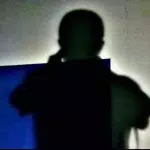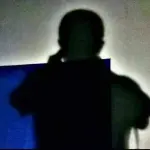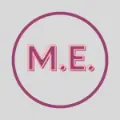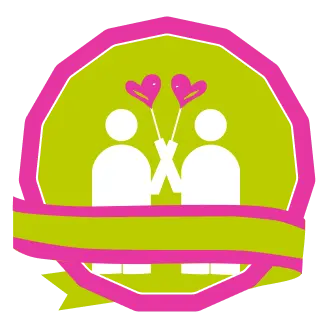For starters, here’s an overview: “Queer” is definitely not a film I can appreciate, and it even gave me a terrible viewing experience, which explains my low rating for it. However, it could very well be a good film, because “Queer” might actually be very queer.

A good film that I don’t like? Sounds contradictory, right? But this phenomenon has already appeared early on in my film-watching journey, especially when I first started watching master films with a learning purpose. Back in college, there was no way I could understand Ingmar Bergman’s “Winter Light,” Michelangelo Antonioni’s “Red Desert,” or Tsai Ming-liang’s “Vive L’Amour.” I remember one day, after a screening that felt like a religious ritual, I boldly declared, “I don’t like this film, but I don’t deny it’s a good one.” One senior, who was studying film anthropology and making his own independent films immediately interrupted, “Don’t doubt yourself. If you don’t like something, then it’s definitely not a good film, even if it’s ‘The Godfather.’”
That senior clearly made an overly arbitrary statement. As we grow older, accumulate knowledge, broaden our horizons, receive aesthetic education, and experience shifts in our perspective, our mood while watching a film and the coincidences between the story and our own life experiences will change the way we perceive and feel about the movie at different stages of our lives. But at least for now, as a single heteronormative man in my middle age, “Queer” is a dish too hard to swallow for me; it’s an unbearably suffocating scene of gaudiness.
Overflowing with cheap and contrived colorful imagery, the film is divided into four chapters. From my point of view, the first part is an uncontrolled vlog about Nirvana songs; while the second part is direct and explicit gay porn. I’ll admit, I’m the type of straight guy who gets condemned in the #MeToo movement. I’m willing to watch bed scenes between two lesbians, but I feel a physical aversion to intimacy between men. Perhaps it’s a sign of being in the closet. The third part has the least psychedelic ayahuasca ritual expression; and the fourth part tries to convey a deep philosophical cosmic view. Unsurprisingly, I gave the film a 3 out of 10.

Not long after watching “Queer,” I ran into a cross-dresser at a café in my hometown, a transgender girl whom I privately mocked as “a fake woman” — a term I don’t mean to use here, but one that reflects the kind of derogatory language often used in certain circles. I quietly “eavesdropped” on his/her conversation about “Queer,” and amidst all the praise, I gleaned two important insights.
First, this queer who likes “Queer” believes the notion that the love story in a gay film will be just as beautiful if the protagonists were heterosexual, and it is echoed among heterosexual audiences; This similarity is exactly that queers would reject. Queers aren’t willing to imitate the roles of men and women in heterosexual relationships just to gain social acceptance. Citing “Call Me by Your Name,” “Happy Together,” and “The Kids Are All Right” as examples, he/she argued that the reason heterosexual audiences appreciate these gay masterpieces is because the creators unconsciously align the stories with the familiar comfort zone of heterosexuality. Of course, this queer acknowledged that these films are still great films that can also move him/her.
Second, the line “I’m not queer” which appears several times in the film, is in fact a very queer statement, one that proves an identity through self-denial. My understanding of this is that queers reject being categorized and always long to break free from being defined. Of course, in saying this, I might be assigning a commonality to queers that they themselves might reject. “Queer” is adapted from William S. Burroughs’ novel of the same name, following the line “I’m not queer,” both the novel and film have an even more explicit expression of identity: “I’m disembodied.”
Indeed, the feeling of disembodiment is akin to consuming ayahuasca — the experiencer is transported to a dizzying, kaleidoscopic world, where he/she feels invisible and untouchable. In that world, I am me — not straight, not queer, or not represented by any letter in the LGBTQ+ acronym.

Of course, my view of “Queer” wasn’t easily swayed by this articulate and unique queer I met in the café. The ayahuasca ritual scene still remains one of the worst visual representations I’ve ever seen — it has neither the philosophical depth of “The Embrace of the Serpent” nor the psychedelic wonder of “Taking Woodstock.” It isn’t even as engaging as Marina Abramović’s “The Space in Between: Marina Abramović and Brazil,” where she shares her firsthand experiences of spiritual rituals. By the way, about half a year ago, I also ventured deep into the Amazon rainforest and considered trying ayahuasca, but both my newly made Peruvian friend and guide from Iquitos advised me against it. They said, “Do it only when you’re with someone extremely close who can responsibly get you to a hospital as soon as you lose consciousness.” I’ve never been the type of guy to seek any physical, mental, or spiritual enlightenment, so I quickly gave up on that fleeting thought. You can read more about this trip in the fourth part of my long-form film travel essay, “‘Fitzcarraldo’: Being with Spirits of Cinematic Figures in a Decaying Jungle.”
But after “eavesdropping” on the queer’s logical oral film review, I came to understand that those contrived art designs, the disordered temporal and spatial dimensions, the fake Mexico City, the shy emotions, and the bold sex scenes, which I found distasteful in “Queer”, are precisely the authentic expressions of queer identity. It’s just unfortunate that it’s so far removed from the comfortable zone I’m familiar with, leaving me incapable of accepting this real queer expression. You are you, we are we — or more precisely, I am me. The queer in the café probably didn’t expect me to understand them/he/she anyway.

There’s also an interesting experience I’d like to share. Eleven years ago, a friend jokingly accused me of being homophobic, and as a result, I received an invitation from the Ontario tourism board to visit Toronto. I was the only heterosexual person in the LGBTQ media group asked to participate in and report on the quinquennial WorldPride. At that time, the travel magazine I worked for, ACROSS, was even jokingly considered by my fellow group members as a transgender magazine, simply because of its name. A direct flight from my hometown took me straight to the grand parade, where I watched groups proudly flaunting their identities parade down the streets.
Men and women dressed as Trojan warriors promoted their condom brands; underwear brands partnered with Red Bull to distribute free beverages and install mist cooling systems to help participants fight the heat; and tourism boards from various Canadian provinces as well as their counterparts from Boston and Vienna handed out their respective cities' “rainbow tourism” guides. In the pamphlets, the acronym that represents the rainbow community was upgraded from LGBTQ to LGBTQI2-S. Twelve thousand five hundred participants from 285 groups filled the central streets, each with their own slogans, floats, costumes, and dances, even pulling in bar-goers who were reluctant to miss the second half of the Netherlands vs. Mexico match at the World Cup in Brazil. The crowd swelled to over 100,000 onlookers. The event felt like a mix of an Olympic opening ceremony and a corporate annual meeting, with teams from Chile, Italy, Israel, Kenya, South Korea, China, and “powerful Thailand” (as stated in its placard) showcasing their national characteristics while proudly shouting slogans. Personnel from Air Canada, the Royal Canadian Mounted Police, the Toronto police, as well as city and provincial unions all made appearances in their work uniforms, and the most popular group, the firefighters, sprayed mist to cool down spectators, who nearly suffered heatstroke.
But LGBTQI2-S consists of many individual groups — so, who, among this sea of individuals, are the queers who refuse to integrate with the rest? Perhaps queers are independent individuals, dressed in all sorts of strange clothes, or perhaps they’re everyone on Yonge Street.



























































View replies 1
View replies 1
View replies 0